Not The Cacowards 2016
 At the end of every year Doomworld publishes the Cacowards, a list of the ten best user-created single player wads released over the course of the year, along with a host of other awards including Best Gameplay Mod, a couple of awards for multiplayer sets and Mapper of the Year. The Cacowards are highly respected and a very useful tool for the community: They help people identify major releases they might have missed, especially when they draw attention to the occasional high quality release that has failed to attract a larger audience. They also provide a jumping off point into the world of user-created wads for new and returning players, giving them direction as to where they should start and an idea as to what they can expect from a given release. It’s also nice to be able to go back and read through all the previous awards to find out about some of the different releases and mapping trends that have influenced the direction of the community and modern releases.
At the end of every year Doomworld publishes the Cacowards, a list of the ten best user-created single player wads released over the course of the year, along with a host of other awards including Best Gameplay Mod, a couple of awards for multiplayer sets and Mapper of the Year. The Cacowards are highly respected and a very useful tool for the community: They help people identify major releases they might have missed, especially when they draw attention to the occasional high quality release that has failed to attract a larger audience. They also provide a jumping off point into the world of user-created wads for new and returning players, giving them direction as to where they should start and an idea as to what they can expect from a given release. It’s also nice to be able to go back and read through all the previous awards to find out about some of the different releases and mapping trends that have influenced the direction of the community and modern releases.
This year was no different and earlier this month the 13th Annual Cacowards was published, showcasing what their panel considers to be eleven best single player wads of 2016 – one more than usual because of a special release by John Romero. There have been a lot of amazing releases this year, and the Cacowards has done a great job at highlighting some of them. For me, the absolute stand out release was Miasma, and there have been some truly impressive megawads like Ancient Aliens, Mutiny and the Japanese Community Project. There are also a few award winners I either hadn’t heard of, or gotten around to playing yet and some which are not to my taste.
As far as I’m aware, in recent years the Cacowards have been decided by an informal panel of individuals from the Doomworld forums and while the final selections are collectively agreed upon, there’s a lot of scope for individuals to argue their case and champion specific wads, even if others don’t share their enthusiasm. Having a selection process guided by a handful of individuals and much more importantly, the sheer volume of high quality Doom releases each year means that any list of the ‘best’ wads will be partial, coloured by individual or collective bias and open to debate. It’s therefore inevitable that some releases will be edged out, snubbed or just plain forgotten.
For this reason, I thought it would be an interesting exercise to attempt to create my own personal list of the ten best single player wads of 2016 that have not received a Cacoward. For each wad on this list, I’ve attempted to write a short review explaining what I enjoyed about them, while also trying to give a partial idea of what they’re like to play. I do not consider the following releases to be ‘the best of 2016’ by any objective criteria, nor am I trying to rubbish the Cacowards. My hope is that by publishing this list, it will encourage people to branch out and try some new wads they otherwise might have missed and reflect back on any releases they’ve enjoyed this year, which haven’t received a lot of critical attention.
Without further ado, here are my ten picks for 2016:
A Longer Mapset, Two Megawads and an Ultimate Doom Episode:
Legacy of Heroes by Gaspe
A set of 11 boom-compatible maps from Gaspe, a mapper I have had no prior experience with. By his own description, Legacy of Heroes is a set of adventure focused maps – some rather lengthy – using the Eternal Doom texture set. I’m usually not a fan of wads described this way, and consider it to be a signal that ponderous maps with obscure progression elements, haphazard monster placement and nothing but low-intensity incidental combat are ahead. So naturally, I was initially quite sceptical.
I’m happy to report I was completely wrong and this turned out to be the most pleasant surprise of the year. The maps show a clear thematic progression, starting in a modern UAC base before sending the player back in time, leading them through an underground village, a cliff top monastery, a sprawling sandbox of a Greek village, a labyrinthine library and so on. All of these maps are linked together from exit to entrance in an organic way and look absolutely beautiful with tasteful, coherent detailing and texture work. The massive village level ‘Kythraessos’ stands out in my mind as being one of the nicest looking town/city maps I’ve played through in years.
More importantly, despite the focus on exploration and length of some of these maps – Kythraessos being the longest, taking me around 45 minutes – they all play pretty well. They exhibit a modest difficulty curve, with a greater prevalence of high tier monsters in later maps, but never really push the player harder than anything in the later maps of BTSX Episode 1. Most of the combat is incidental, but doesn’t fall into the trap of merely presenting large numbers of bullet sponge enemies, obscured hitscan snipers or leaving significant voids without any action. The set also contains a few more tightly choreographed fights and traps, which are all inventive and capable of taking the player off-guard but without creating nasty difficulty spikes, which is one of my pet peeves with long maps. Some of the maps do have puzzling progression elements to them, especially MAP07 & MAP09, but I found them manageable enough with my less than stellar ability to navigate 3d spaces. Ultimately the spaces Gaspe creates are so attractive and well-signposted with recognisable landmarks, that even when the player is unsure of their next move, they won’t be totally lost and will be enjoying their time searching around..
The set only has one significant weakness: Across a few of the maps, there was a conspicuous lack of armour for much of the running time, leading to ‘prickly‘ play – to pilfer an expression from rdwpa – and a lot of unnecessary discomfort. This acts as a soft roadblock to fast, aggressive play as a player is less likely to charge out into the unknown knowing that a single revenant rocket or hitscan attack could lead to an sudden end. However, this is fine for the more patient players who prefer to take their time and soak in the atmosphere.
Overall, Legacy of Heroes was excellent and one of my favourite things to come out this year. I’m really surprised that it didn’t get any sort of mention in the Cacowards and neither was Gaspe named as one of the ‘most promising newcomers’, which to my mind he clearly is.
Sparta 2 – Project Vesuvius by Cannonball
Cannonball is well known for his Ultimate Doom sets such as ConC.E.R.Ned and the Cacoward winning E4 replacement Thy Flesh Turned Into a Draft-Excluder. However, he’s somewhat less well known for, but equally adept at making Doom 2 maps, with excellent contributions to community projects such as Slaughterfest 2012 and Nova II: The Birth under his belt. Sparta 2 is a collection of scrap maps and reworked concepts pulled from various projects, filling out to a total of 19 boom-compatible maps. Despite this, it’s a surprisingly cohesive experience with a clear difficulty gradient throughout: Starting off mildly tricky, stepping up in intensity every few maps and ending on an uncompromisingly challenging note, gleefully assaulting the player with maliciously placed viles, revenants and cyberdemons.
Cannonball’s mapping style is typified by large, open flowing spaces that loop back around on each other, with a strong mix of monsters peppered throughout to provide constant pressure that never really lets up. It’s hard to carve out safe space or find any breathing room, as monsters filter towards the player constantly. As such, his maps encourage dynamic, highly aggressive play – weaving around mobs and seeking out the high value targets like viles and pain elementals along the way. There are few tightly choreographed traps or sudden lock-in scenarios. Instead, it’s more likely that monster will pop out of the ground, a closet will open right in the face of the player or previous areas will become seeded with even more monsters.
There are a few problems with set and changes to the base game that could act as a potential deal breaker for some. Firstly, both the afrit – a flying baron of hell that shoots a volley of revenant rockets and mancubus fireballs – and a significantly nerfed Mr. X – an evil marine that shoots a rapid volley of plasma – have been added to the roster, last featured prominently in Scythe 2 and Resurgence. Despite receiving a large nerf to his movement speed, Mr. X can still push out an outrageous amount of plasma damage in a very short time-frame and is reasonably resilient with 200 HP. This is a problem when placed poorly, such as when they’re used as a full frontal instant pop-up trap in MAP11 or when they blind-side the player in groups after being released silently in some obscure monster closet – all situations that can feel a little cheap and underhanded. I’m also aware that many people despise the afrit, which features heavily in the latter half of the set in almost all his original splendour, due to his extremely lethal and hard to avoid volley of attacks.
If you can handle these custom monsters and have the stamina to take on the harder maps, you’re in for a fantastic time. While the set as a whole provides serviceable visuals and some nice architectural ideas, the focus is strongly centred on gameplay. So if you’re looking for anything other than a decent challenge, you’d to better to look elsewhere.
Return to Hadron E2 by Cannonball
Episodes for Ultimate Doom tend to bore me because without the Doom II bestiary the game feels a little flat and one dimensional: All non-humanoid monsters possess projectiles that travel towards you in a straight line, either slowly or a little faster in the case of barons. The tendency to treat the rocket launcher and plasma rifle as premium resource can leave the player grinding away at cacodemons and barons with the shotgun slowly. This is a tedious, very simple exercise that is very difficult to fail. Without the tools and extended bestiary from Doom 2, making a challenging and entertaining Ultimate Doom episode is quite a difficult task.
Cannonball is one of the few mappers who has shown himself capable of pulling this off, as his mapping style is well suited to the task. Return to Hadron E2 is an episode 2 replacement with a nice brisk pace throughout and some genuinely challenging scenarios in the secret and final maps. Again, the focus is on keeping the playable space well populated, open and allowing free movement of both the player and monsters to maintain constant pressure. Despite the limitations of Doom’s bestiary, Cannonball’s layouts maximise their effectiveness by allowing for constantly changing crossfire scenarios as the monsters make their way toward the player. When the player isn’t outright given heavier weapons to deal with the beefier monsters or larger mobs, they’re encouraged to push forward in search of supplies. This is reinforced by the lack of any gotcha moments or punishing traps for overextending. In particular, there are also no enclosed arena fights that assume the player is entering with correct equipment or fail to provide the necessary tools for survival.
The maps exhibit a lot of variation to keep the player engaged, from the concept-oriented E2M6 where a cyberdemon stalks you through a series of looping sewer areas filled with damaging blood; the frantic, non-linear techbase gauntlet of E2M7 with a caged spider mastermind watching over the central hub; and the climactic E2M8 where the player is given an ample amount of cells and rockets, but put under lethal crossfire pressure from caged cyberdemons, while slowly being walled in by waves of barons and cacodemons.
Aesthetically, the set offers no real surprises, sticking almost entirely to vanilla resources to create some some competently put together techbases, peppered the occasional pocket of corruption, some nice overgrown segments and caves. The lighting tends toward the dim and moody, especially in E2M8 and the secret E2M9.
On the whole, this set is much more accessible than Sparta 2, even if it shares much in common with it from a gameplay perspective. I’d highly recommend it to anybody looking for a new Ultimate Doom episode to play through.
Italo-Doom by Ribbiks & Dannebubinga
What do you do straight off the back of a critically adored megawad like Sunlust? Well, Danne and Ribbiks decided to blow off some steam by making the most absurdly overbalanced set of slaughter maps they could. Italo-Doom is packed full of much despised tropes like mandatory deadly platforming sections, seemingly unconquerable boxes stuffed with as monsters as they could fit, and a complete disregard for difficulty settings – going as far as to remove all the monsters from every other difficulty setting other than ultra violence, now renamed “Italo Violence”. This set is neither fair, nor is it viable for the vast majority of players – myself included – to beat a large number of the maps without saves. On the face of things, playtesting seems to have been a fairly minor concern and the maps while technically and aesthetically sound, don’t come close to the beauty and degree of craft seen in Sunlust’s maps. A strong argument could be made that Italo-Doom is indeed nothing more than a jokewad.
So why is it one of my favourite releases of the year? Firstly, the set has a great sense of fun about it; from the Italo Disco soundtrack, the amusing map names and ways the maps keep ramping up to ridiculous new extremes in inventive ways. Map01 provides a great example of this: The initial pin the player is put in is ridiculous. There’s an active cyberdemon staring at them from about five feet away and two viles flanking on either side, atop a pillar surrounded by a sea of infinite height pinkies. If they manage to drop down without being blown to pieces and use the provided plasma rifle to carve a path to the BFG visible at the bottom of a long staircase, they’re rewarded with the arrival of four cyberdemons that advance forward, pinning the player into a dead end. The rest of the map consists of a series of cramped arenas where the player is either physically restrained by boundary walls dotted with perched revenants or inescapable pits. Once the player has killed all of the active monsters on the map, the final insult is a remarkably awkward platforming section consisting of multiple steep strafejumps where any mistake results in an instant death. For me, there was a real incentive to try all of the maps if only to explore the variety of ridiculous new ways to crush a player’s spirits.
However, upon further inspection the dynamics of these maps feel like they’ve been quite carefully considered when compared to other ‘extremely hard’ wads like Chillax, Tarakannik and their ilk. With these sets, it feels like the mappers don’t really understand the dynamics of their own maps and the points that present a challenge beyond prolonged macro-level crowd control feel both unplanned and uncontrolled, relying on brute force and a large amount of luck. As a result, there are very few non-TAS demos for these sets and they are largely relegated to cooperative play on survival servers, often with modified rule sets. On the other hand, all 20 maps in Italo-Doom are beatable from a pistol start without saves and demos exist for all of them, even if they were recorded the the very best players out there. It just proves that player strategies were considered for when these maps were made and no encounter is insurmountable, even if some do end up relying on no small amount of luck to pull off.
Another great strength of this set is how every map is a relatively short experience with minimal filler. There’s no grinding away at meat walls for 20 minutes to fall to the same luck based encounter at the end. While every encounter is intensely demanding, the player knows there’s an end in sight. This helps with replayability for those who want to chip away at the wall without saves, praying for a win. For everybody else, I’d strongly encourage you to save scum your way through this set. Treat every encounter like a puzzle and try to figure out a workable solution. Even if you conclude that Italo-Doom is just another jokewad, you’ll probably learn something new about the game and still have a couple of laughs in the process.
Shorter Mapsets:
Toilet of the Gods by Benjogami
Toilet of the Gods, or ‘神々のトイレ’ is a collection of four (five when including a map31 remix of map03) boom-compatible maps heavily influenced by Sunder. Like Sunder, the maps have a strong focus on macro-scale aesthetics and architectural grandeur, but TOTG builds its own identity by using vanilla marble textures and changing the colour palette to revolve around purple nukage and turquoise highlights in a manner reminiscent of vaporwave. The effect is very simple, yet striking and the implementation diverse enough to ensure each map will be burned into the memories of those who challenge them.
The gameplay is uncompromising, deeply claustrophobic and extremely challenging, just as it is in Sunder. Encounters are based around massive hordes of monsters, with some emphasis on homogeneous groupings, relying on their specific characteristics when part of a single mass to pressure the player. Despite this, the layout of the maps means this claustrophobia manifests in different ways and as a result each area feels like a fresh challenge: MAP01 owes a large debt to the infamous Precarious from Sunder. The first major encounter relies on a small floating island containing three cyberdemons and some barons, with waves of distant cacodemons pressing towards the player from afar. The final arena provides a vast sea of hell knights on an island ringed with very irregular shaped platforms along its perimeter. While the player can use their crowd shaping skills to stay on the island to a limited extent, the challenge is traversing the unstable platforms that encircle it, thinning out the hordes while dodging projectiles and trying not to fall into the nukage sea far below. MAP02 shifts focus somewhat to crowd shaping skills in both a maze of hallways and interconnected rooms, and a large traditional arena. In both cases, the challenge is not getting backed up against a wall or caught in the midst of the baying mob. MAP03 is a large open sandbox that starts off empty and progressively fills with monsters, challenging the player to adapt on the fly and figure out how to collect the important items before they get overwhelmed.
However, as with Sunder the strong focus on aesthetics and certain concepts is ultimately detrimental to playability. The platforming throughout is oppressively difficult and awkward, something that’s somewhat unavoidable when you try to enforce precision with Doom’s slippery movement. This is a bigger problem in some source ports than others: In PrBoom+ it’s possible for the lip of many of the pillar jumps in MAP01 to propel the player backwards unexpectedly due to quirks with how Doom handles movement. Also, navigating the bumpy floors and platforming in general feel far harsher in non-ZDoom based ports in a way that’s hard to quantify. While there are difficulty settings implemented that focus on taking the sting out of the fights by either removing the nastiest monsters or thinning out groups, this helps very little when it comes to the ever present mandatory platforming segments that comprise the real challenge of most maps.
Despite its flaws, Toilet of the Gods is an ambitious project and largely succeeds in what it sets out to do, comfortably standing alongside its inspiration, Sunder. It’s certainly not to everybody’s tastes, but it’s undeniably impressive for a first major release and will stick in the minds of those who decide to take it on.
NH 4, 5 & 666 by TimeOfDeath
I’m cheating somewhat because this is actually a series of three separate wads released over the course of a few months. However, as they’re all conceptually linked by a central idea and could easily be compiled into a single seven map wad, it makes little sense just picking out one set arbitrarily. The NH series is a collection of limit-removing vanilla maps where there are no health or armour pickups at all. This handicap transforms even simple full frontal combat scenarios into something stressful, challenging and thoroughly engaging because every minor execution mistake and moment of inattention will whittle the player down, reducing their margin for error further for future encounters.
The two maps in NH4 feel more like a gauntlet of very tightly choreographed challenges rather than organic maps and serve as a good introduction to the concept. In MAP01 the player starts cornered by a crescent of sleeping revenants with only a BFG and a glut of cells. The doors ahead contain a trio of cyberdemons and then some viles, before a wave of cacodemons spill over the wall at the back of the map. MAP02 takes place entirely in a ring of small caverns and focuses on controlled waves of monsters and resource austerity. Thanks to some clever dehacked trickery, the player must first kill two revenants with only 3 SSG shells, starting a cycle of opening a door to find some booby-trapped resources, followed by a wave of escalating monster spawns; from a sea of zombiemen, to hell knights, and finally some viles and chaingunners.
NH5 and 666 contain longer organic and traditional feeling maps, though the player is still largely in control of the tempo of play due to the segmented nature of the maps through the use of switches and doors. All of the maps in NH5, and MAP01 of NH666 are BFG focused and monster heavy. As such, they demand some degree of competency with the BFG, including the ability to two-shot a cyberdemon – the very first act of NH666 MAP01 – so make sure you’ve brushed up on your two-step game and tracer control. For those who are put off by high-density encounters or BFG heavy play, you may feel compelled to skip over these maps and head straight to NH666 Map02 and there’s no shame in that. These maps are challenging and have a very specific character that isn’t for everybody.
TimeOfDeath has a knack for building attractive, clean and functional maps using only vanilla resources. A deceptive amount of craft goes into creating and lighting them and the best results can be seen in MAP01 of NH666. He also excels at creating spaces that start off simple but grow, reconfigure and become increasingly interconnected over time as the player branches outwards, often returning to find walls have vanished with new arrangements of platforms and pillars created by moving floors.
He’s also a musician and sometimes creates off-kilter, atonal soundtracks for his mapsets. NH4 features midi renditions of some very short metal compositions, while NH5 goes all out and uses high quality mp3s from his band Nostril Caverns. While this won’t be to the taste of many, for me this is an essential part of the charm of his work. In practice, I find the music quickly dissolves into the background, creating a strangely hypnotic effect as I’m playing. However, for more normal people I’d recommend turning off music when mounting serious attempts at the maps in NH4 and 5, especially if it gets on your nerves. NH666 on the other hand features more traditional music choices and won’t raise any hackles.
I appreciate TimeOfDeath because at the end of the day he creates the maps that he wants to play and as a result his personality shines through all of his projects. Every encounter he builds into his maps – no matter how challenging – is fair and designed to be enjoyable to people with a certain mindset. This is made clear by the fact he’s the only mapper I can think of who records UV-Max demos for all of his maps and posts them publicly. The NH series is no exception, with demos being provided in each of the wad archives. The NH maps rest on a good concept and are executed extremely well, albeit all skewed towards ToD’s specific style of gameplay and love of slaughter scenarios, which is admittedly not to everybody’s tastes. Try out NH 4 and then move on to 5 and 666 if you like it. If you’re looking for more, then go back and check out NH3, as it was one of my favourite maps of 2015.
Pepper by Ribbiks
Pepper is a set of three reality maps by Ribbiks. Reality maps are centred on the concept that the player only has one point of health, with no extra health or armour pickups available. This takes the ‘No Health’ concept of my previous selection to its logical conclusion and requires a player to have perfect execution, avoiding being hit at all costs. The concept originates from ‘reality’ style speedruns, which are any kind of demo file where the player doesn’t take any damage (as getting hit by a fireball would kill you in real life). As far as I’m aware, TimeOfDeath’s Reality Maps was the first mapset explicitly designed around this concept with a special dehacked patch to lower the player’s starting health to 1. In 2015, Memfis revived the concept with his outstanding New Reality Maps where the goal was to beat three short, but escalating in intensity maps through continuous play without dying.
Pepper stands apart from both of these previous sets as it lacks the mandatory continuous play setup of New Reality Maps and does not immediately force the player into a rather aggressive and unwelcoming meat-grinder set-up, with a rocket launcher and two oozing walls of imps, like ToD’s Reality Maps. However, of the two it bears a closer resemblance to New Reality in its approach to monster placement and combat scenarios. In Pepper, Ribbiks works in his established style of very tightly choreographed and controlled combat setups, but with a very limited number of monsters.
Reality maps fundamentally alter the player’s analysis of given threats and changes the priority of monsters in combat scenarios. Zombiemen – and the other two humanoid monsters – suddenly transform from being a bit of comic relief or light pressure, to the most dangerous and frightening force the mapper can unleash. As a result, reality maps have a very different character to ordinary maps and can’t be played on autopilot, requiring the player to be attentive and to figure out a new way of approaching things.
MAP01 starts out a limited set of monsters; introducing imps, demons, the humanoid monsters, a couple of cacodemons and a revenant to the player gradually as they venture through an open-air playground. The player is often given the time to study monster positioning before they become active, so they can formulate a plan of attack. Ammo is also given out sparingly – a design trope that persists through the entire set – forcing the player to carefully consider what to engage and when, ensuring they are as precise and controlled as possible with their shots. MAP02 increases the difficulty by introducing lost souls, a pain elemental, a mancubus and an optional secret fight with a pair of viles and arachnotrons, all while keeping the monster count to a lean 30 (on UV). These two maps serve as an excellent warm up for the much more demanding MAP03, which is a longer non-linear experience with more monsters (82 on UV) and some optional key hunts. These keys are protected by some mildly puzzling progression elements and tricky encounters; one involving a berserk pack that impishly doesn’t increase the player’s health, but allows for some very high risk revenant punching. While these key areas are optional in theory, they open chests and provide useful tools in a timed cyberdemon fight at the map’s end. Unfortunately, while closed, these locked chests provide a perfect surface for rocket splash damage, making the idea of dancing around the cyberdemon while waiting for the exit bars to lower extremely risky and unappealing. In practice, most players will therefore want to have collected both keys before trying to leave.
Aesthetically, the maps are tastefully textured and detailed, but with relatively simple and utilitarian architecture very much like those in his Cacoward winning set of speedmaps, Crumpets. All of the maps also feature a beautiful rainbow coloured night sky for those using OpenGL source ports, which really gives the maps a unique and memorable aesthetic character. This combined with a selection of light chamber midis for background music generate a peaceful and calming atmosphere, perfectly complementing the restrained and thoughtful gameplay.
Pepper is an excellent example of one of my favourite styles of mapping and presents a very different approach than Doom’s normal gameplay. I’d strongly recommended it to anybody.
Single Maps:
Ovum by rdwpa
The appearance of rdpwa in 2015 and their subsequent rapid development as a mapper has been one of the most exciting things to watch over the last couple of years. My interest was first piqued in mid-2015 while they were experimenting with layouts and trying to develop his style over a series of 19 speedmaps. The unifying characteristic of these early experiments was a strong understanding of monster behaviour, their potential interactions and the best way to place them on a map to create extremely challenging combat scenarios. The monster count in these early maps is deceptively low, but there’s absolutely no filler in any encounter: Every monster contributes towards a lethal crossfire that pushes the player’s on-the-fly planning and threat analysis abilities to their breaking point. He continued to develop along this path, moving from the concept oriented sketches in his speedmaps to more complex and cohesive stand-alone maps with From Tears, Mucus Membrane and How to Train Your Pet Cyber, which are all still very much in the same vein.
In February, rdwpa released Ovum which is the clear zenith of this phase of his mapping career. From the very start, Ovum puts the player in a nasty pin confronting them with a small pocket of revenants supported by a mancubus perched on a platform to the left and some lost souls to the right. The only tool at the player’s disposal is a rocket launcher with a limited pool of ammo, but its use is risky given the positioning of the souls. If the player decides to push out of the opening cavern to escape this pin, they are rewarded with a soulsphere and additional ammo, but are also greeted by chaingunners on either side and an active archvile. The challenge is to adapt to this new crossfire situation and find a safe way of eliminating the vile and immediate threat of the chaingunners. Every monster has specific purpose and is placed to act in such a way as to augment the threat of one another, instead of simply acting as harmless walls of meat to cut through or to easily manipulate into infighting. This opening typifies the incidental monster placement throughout much of the map.
The map then opens out into two branching paths that eventually loop back on each other, with the objective of collecting two skull keys to open the exit. Incidental combat as the player works towards each key arena is highly pressuring and trap-heavy. The tempo of play is dictated by the map through trapped resources that spawn monsters to frustrate obvious avenues of retreat; creating ammo scarcity through breadcrumb distribution; and the use of limited radsuits and hurt-floors as a means to force the player to act decisively. Every encounter is highly choreographed and controlled in such a way that demonstrates a keen understanding of player psychology and how they will want to ideally act.
The most impressive parts of the map are the two key setpiece battles. Both of these fights are balanced on a knife edge. The player is pressured in ways that force them to move through the arena according to the map’s logic; meeting them each step of the way with further resistance through spawns and traps; and increasing the intensity until they’re on the verge of being overrun. The red skull fight is timed in such a precise way that it effortlessly matches the player’s instincts, predicts where they’ll want to be positioned and rebuffs them at the most inopportune moments.
Despite the heavy choreography; the interesting organic layout, interconnectedness and verticality of Ovum make the player feel like they’re exploring an existing space and not simply enduring a series of artificial challenges. There are several optional areas centred on collecting resources that the player can survive without if they wish, or miss through inattention. The establishment of this organic feeling environment is also aided by the fact Ovum has its own distinct aesthetic identity – a sort of biomechanical, flesh-covered hell – and boasts some nice architectural structures and vistas, especially when looking out over the red skull key arena. There are a number of secrets accessible through concealed switches and timed reveals that integrate so closely into the maps, it can become very hard to uncover them. The secrets themselves provide non-essential resources, usually with a significant cost through a nasty trap or an extremely frantic arena fight in the case of the hidden plasma rifle. As a result, you can play Ovum in a variety of ways, choosing to avoid large sections of the map that are too intimidating if trying for a quick exit, or thoroughly probing its every recess looking for a fight.
On Ultra Violence difficulty, Ovum will present a significant challenge to even the strongest player. Though the specifics of my review are centred on this difficulty, the map is also balanced for HMP and HNTR in a way that maintains the character of many of the important fights, while significantly weakening their bite. I’d strongly recommend trying this map, but don’t hesitate to lower the difficulty if the challenge proves to be too severe and don’t be afraid to look for alternative routes through the carnage.
Eden by rdwpa
In the second half of this year, rdwpa took on a new style of mapping: After taking a larger interest in speedrunning, they decided to make maps that better compliment that style of play. This has resulted in a shift away from tight-choreography to more open maps, where there is scope for aggression – without immediately being frustrated by hard resistance – and giving the player more control over the tempo of encounters based on how hard and far they wish to push forward.
Eden, released in August, is the most complete expression of this new style. This is a lengthy boom-compatible map which tends towards open flowing spaces and slaughter styled fights. While playing, it feels very much like a map of two halves:
At the beginning, the player fights through a flowing wood and metal arena that forms a medium sized circular ring. As the player moves through this space in search of important items like armour and the super shotgun, the monsters filter in. The number of monsters is higher and the composition of groups more varied than in Ovum; the optimal strategy being to move around the arena, attempting to eliminate the most dangerous targets like viles, who will likely be mingled in with large groups of hitscan enemies. There’s a switch to control the release of a brown skull key, but doing so causes more monsters to spawn in various places around the ring and an immediate, controlled spawn of archnotrons and pain elementals on the key platform. The player can choose to either trigger this release early and deal with a more chaotic and dense engagement, or play a safer game by neutralising the existing monsters first, then releasing the next wave.
While monster placement is generally far more chaotic and less choreographed than in Ovum, rdwpa’s strong understanding of monster roles and their synergies ensures that these fights never devolve into mindless grinding and always retain a dangerous edge. However, this first half of the map still offers some more tightly choreographed fights that wouldn’t feel too out of place in Ovum, with the rocket launcher arena; the secret backpack fight in the centre of the ring; and the secret arena accessible through an extended and surprisingly gentle puzzle-oriented ramble around the grassy islands and huts that encircle the main ring. These fights take control back out of the hands of the player and force them to keep up with the map’s strict tempo as they develop. The secret yellow arena is particularly enjoyable example of this; putting the player against a duo of cyberdemons, with waterfalls that deliver a steady stream of demons and revenants and ever shifting walls that reveal fresh waves of carefully selected monsters. The intention of this fight is to overwhelm the player through force of numbers and player’s role is to shape the crowd to gain access to newly revealed, high priority monsters like pain elementals as they reveal themselves.
The second half of the map is dominated by a large grassy meadow that snakes around a lake, river, a flooded cavern and some ruins. This segment is one long, flowing slaughter scenario where the objective is to find the green skull key, lower the BFG and clear out the gigantic sprawling mass of monsters before exiting. The layout of this part of the map and composition of the monsters is chaotic enough to ensure that the player is never safe, will always be dodging projectiles and must keep mobile to avoiding getting getting trapped. The player does retain some control, as at certain points there are opportunities for them to find a foothold and thin out the monsters before pushing deeper into the unknown if they wish. When the BFG becomes available, the fight reaches its crescendo, with a lot of high value viles and cyberdemons distributed around that require immediate attention and a solid plan of attack.
Eden is a great map and proves that rdwpa is a flexible mapper, continually developing a widening set of skills. Aesthetically, the palette of green and blues makes eden a very attractive map and the architecture of the smaller islands is cute. As with Ovum, difficulty settings are carefully implemented to make the map accessible to a wider audience, despite its slaughter heavy nature. I’d therefore recommend giving it a go, even if slaughtermaps aren’t usually your cup of tea.
I’m excited to see what rdpwa is going to make next; whether they continue in this vein (as they did with their recent iw.wad) or tries his hand at something completely different. One particular thing I’d like to see is his collection of early speedmaps compiled and all of his stand-alone maps finally pushed out as ‘final’ versions and individually uploaded to the idgames archive. This would allow more people to notice and enjoy his maps beyond the Doomworld forum and more importantly, ensure none of them become lost or hard to track down as temporary file sharing sites vanish into the night (many gggmork maps come to mind).
Ave Exitium by Obsidian
There were a lot of potential candidates for my final entry on this list. I could have chosen something like THT: Threnody, Endpoint or Absolute Dishonour – all high quality, polished releases with broad appeal. Instead I decided to eschew such safe choices and pick something that, while flawed and extremely niche, really got under my skin. To draw an analogy from the 12th Annual Cacowards, Ave Exitium would be my Erkattäññe for 2016.
Ave Exitium is a single boom-compatible map by Obsidian. If you asked for one word to describe this map, the best choice would be ‘oppressive’, as it is a truly oppressive experience in every respect. All the action takes place in a cramped metal facility detailed with darkened walls and plenty of blood pools, waterfalls and other red highlights. To enhance the mood further, the map is dimly lit leaving much of it enveloped by shadows, causing the lurking monsters to only be visible in as silhouettes in the distance.
What makes this map so potentially divisive and niche is its gameplay. This is perhaps even more suffocating oppressive than the atmosphere that contains it. The closest comparisons I can draw are to Malcolm Sailor’s Chord series and some of the same encounter design that characterises skePLand, though presented in a far more linear context. Ave Exitium presents highly focused, claustrophobic encounters with plenty of high tier monsters under the unwavering constraint of extreme ammo and resource austerity.
From the first encounter, the player is pressured by a glut of demons and imps, with some perched barons and revenants generating a lethal crossfire. While there are two boxes of shells here, providing the illusion of wealth, if the player squanders them on this initial encounter, they’ll quickly find themselves in worse situations with no resources to call upon. There are two paths through the map, each offering a single key and leading to the same blood-filled arena and blind drop that returns back to the start. These keys are heavily booby-trapped, as are almost every step of the paths towards them and all major resources. Everything about this map is hostile and actively trying to screw the player: Mancubii are hidden behind opaque red panels in the walls to prevent the strategic camping of many encounters. Nasty vile and pain elemental placements threaten to undo the player’s work and ruin any attempt at ammo conservation. Secrets are lethal, more often than not and key resources like the super shotgun act as the bait for exceptionally punishing pins.
For the first leg of the map, the player only has a shotgun, until they finish one of the key routes where they’ll find the super shotgun. There is no chaingun and the rocket launcher only comes into play for the last couple of segments of the map. The only reprieve comes from a berserk pack, available very early on. To conserve the very limited amount of shells available, a lot of monsters need to be punched – mostly imps and demons but also the occasional revenant or baron.
The twin problems of resource scarcity and aggressive, trap-happy placement make this map extremely difficult to survive and wholly unsuitable for FDA-style play. Some fights felt so overtuned – like the red key fight with the wall of zombiemen, two viles and sniping imps and mancubii – that I had to sit down and come up with time consuming strategies to beat them consistently. This mainly involved travelling around the map in a loop multiple times, and retreating from immediate pin situations to both find more resources and create safer angles of attack. These fights ultimately don’t feel very ‘fair’ and by Obsidian’s own admission, Ave Exitium receive much playtesting because he made a significant portion of it in a ‘depressed stupor’.
The map isn’t without bugs either: There are a couple of dodgy monster closets that sometimes fail to warp monsters into the playfield (the demons beneath berserk pack are the main offenders here). There are also some ceilings that are slightly too low, so monsters partially clip through them, and it’s possible to skip over some linedefs causing other minor map malfunctions.
So with all this in mind, why do I still consider it to be one of the best things I played this year? To start with, the atmosphere is excellent and some of the ideas behind the traps and arenas are inventive and engaging – two favourites of mine being the aforementioned red key fight and the tiny octagonal secret area where the player is forced to punch out six revenants without getting cornered. But most importantly, there is something intoxicating about challenging a map that displays such an active contempt for the player – fair or not – and figuring out a way to take it apart piece by piece is a lot of fun.
Ave Exitium has no difficulty settings, so there are no half measures or shortcuts to success. But if you take it on and survive, I guarantee you that those first steps out of the complex into the dusk will deliver a very special feeling indeed.
That concludes my list of the ten best non-Cacoward winning releases of 2016. If you disagree with my list or think there are other wads more deserving of attention, please write about them! It would be fantastic to see more people writing about the wads that excite them and attempting to articulate why they consider them to be so enjoyable.
 cyberdemon.co.uk
cyberdemon.co.uk
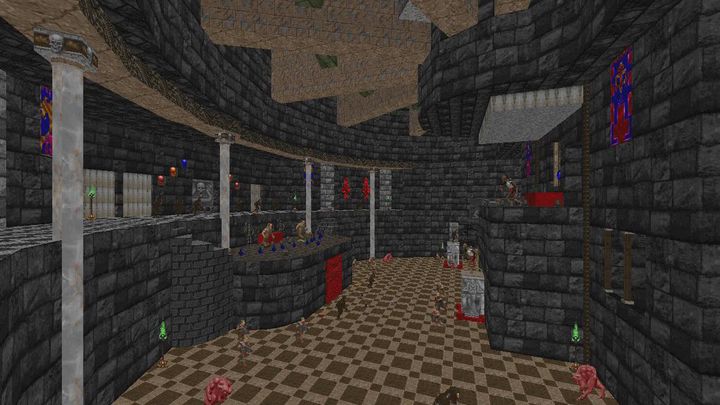
![Legacy of Heroes – MAP06 "Desolate Gardens" [I]](/posts/2016/not-the-cacowards-2016/legher2_hu3ca4950b9883fae5266660cbb3e73c52_74528_8f8ceb69ae461ee81593b8e0a8ec092e.jpg)
![Legacy of Heroes – MAP06 "Desolate Gardens" [II]](/posts/2016/not-the-cacowards-2016/legher3_hu15f02d80dcc000fa6f4a0e9a572d63a1_149184_6c1c37b5b5458d5047c39c55ce4f347b.jpg)
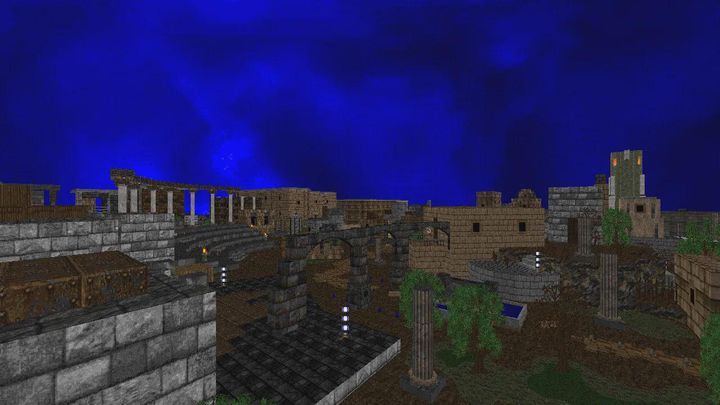

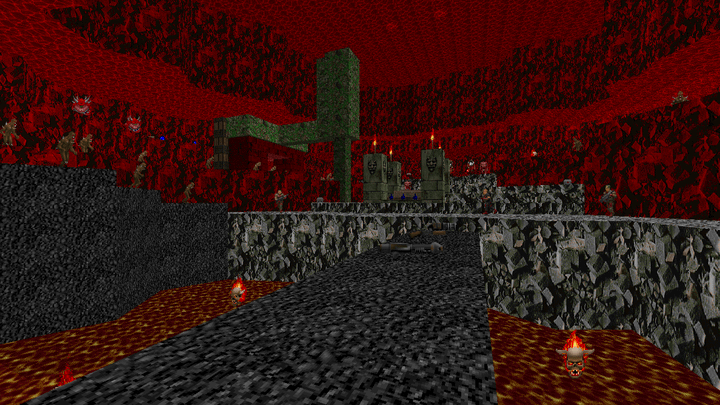
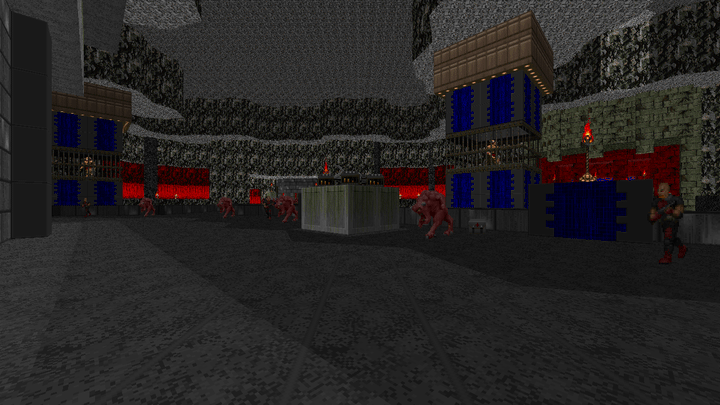
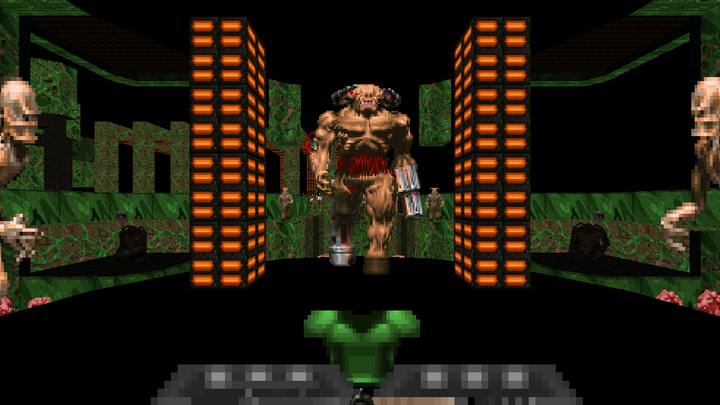
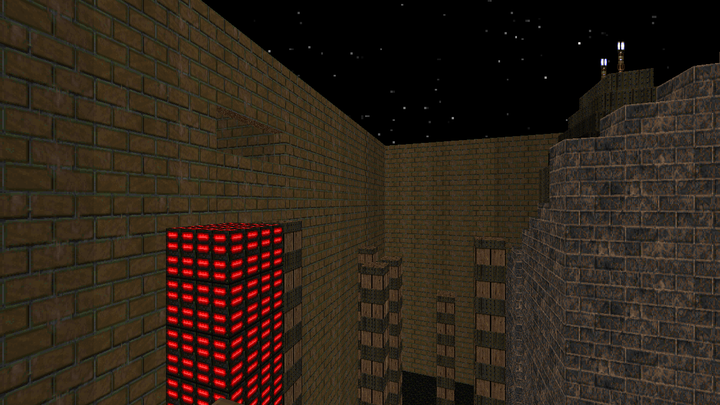
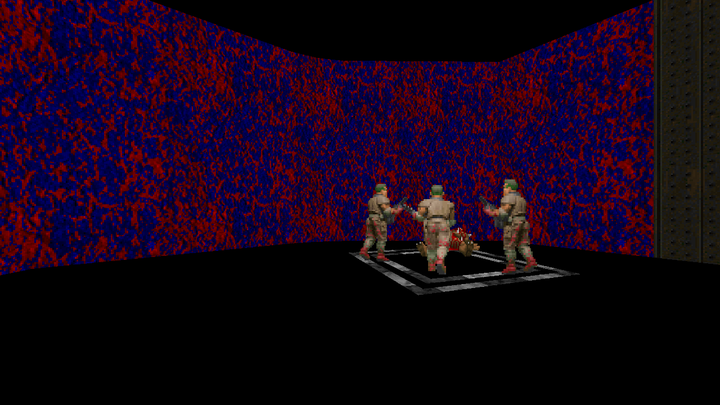
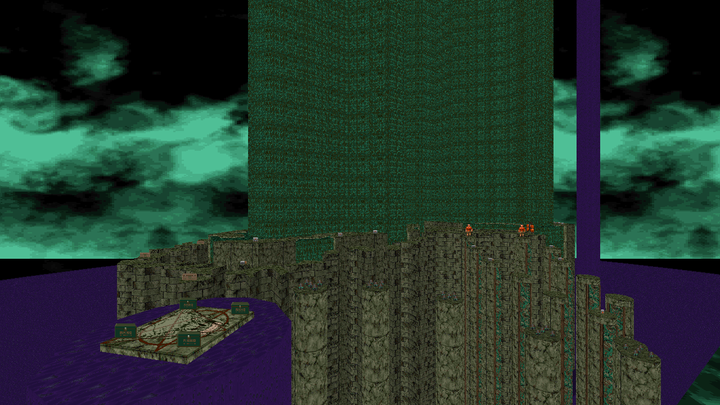

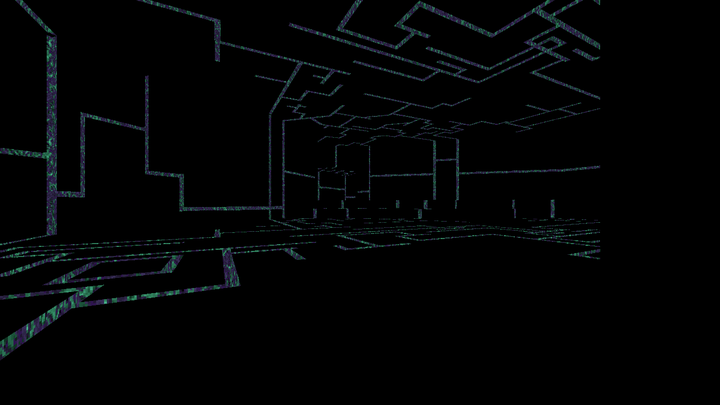
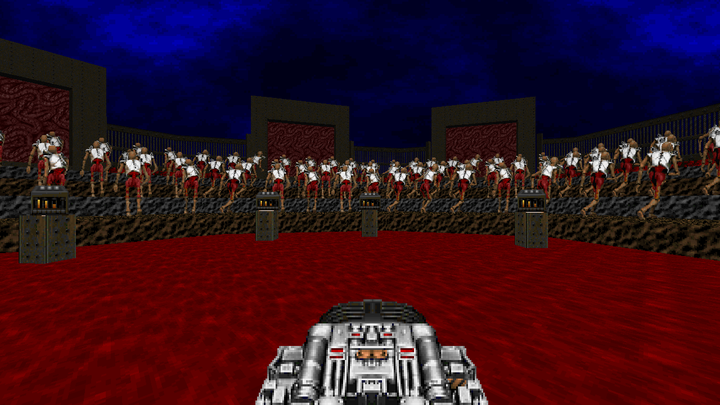


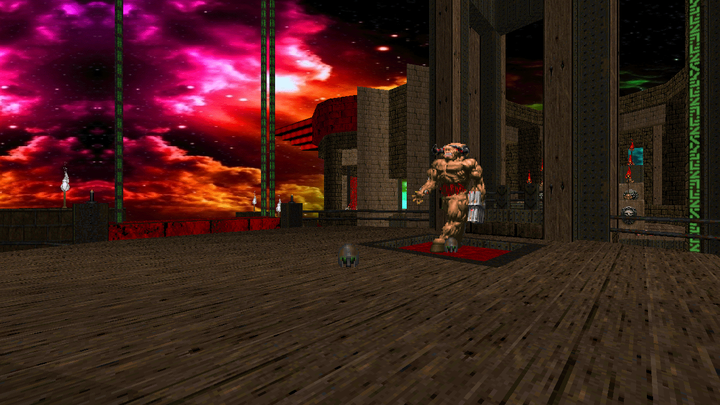
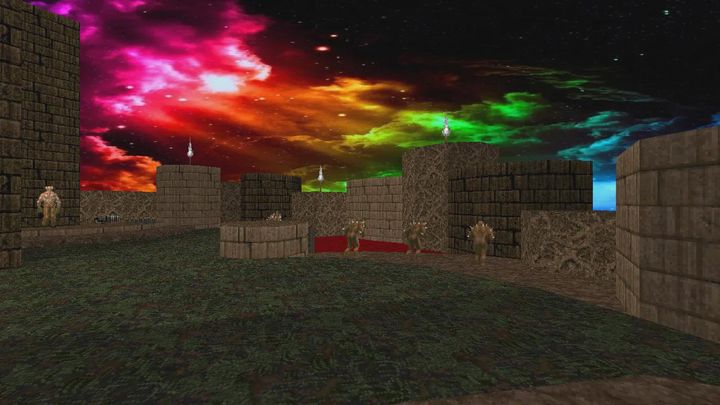
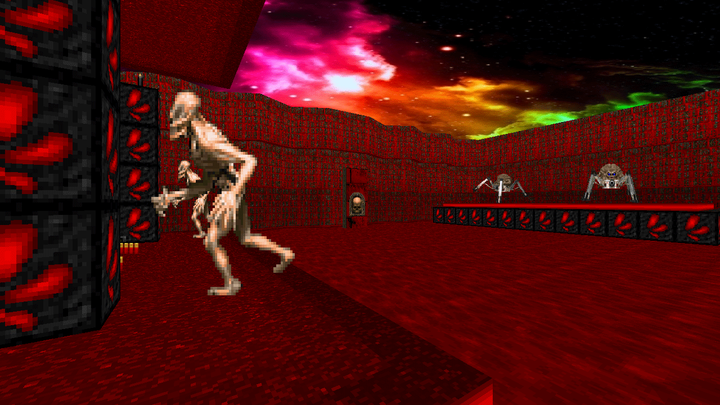
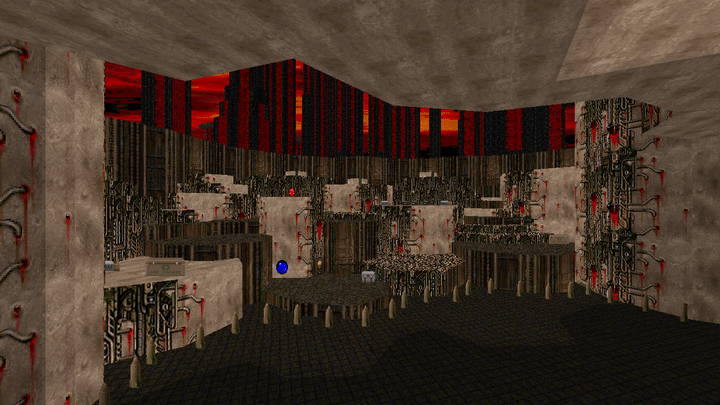
![Eden [I]](/posts/2016/not-the-cacowards-2016/eden1_hu0404074122c321a730c6a56a81d21e73_219744_2cba4c5301adc782fec740a357673d17.png)
![Eden [II]](/posts/2016/not-the-cacowards-2016/eden2_hu0e546ed33453e47aa9b259265dfbca90_306988_32e516f97a416de291e7a5a78f84c41c.png)
![Eden [III]](/posts/2016/not-the-cacowards-2016/eden3_hu6386291e58485eb43467f6ff33094be2_204996_31782c7a4670308118372833d5b650d4.png)
